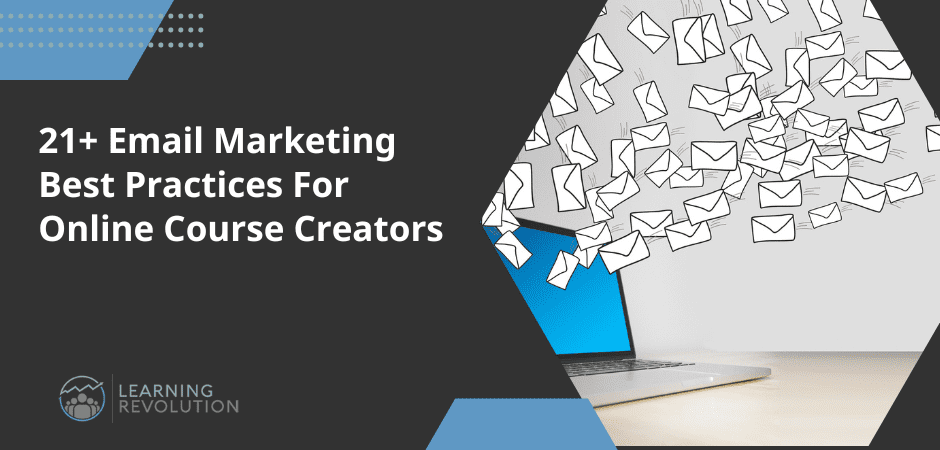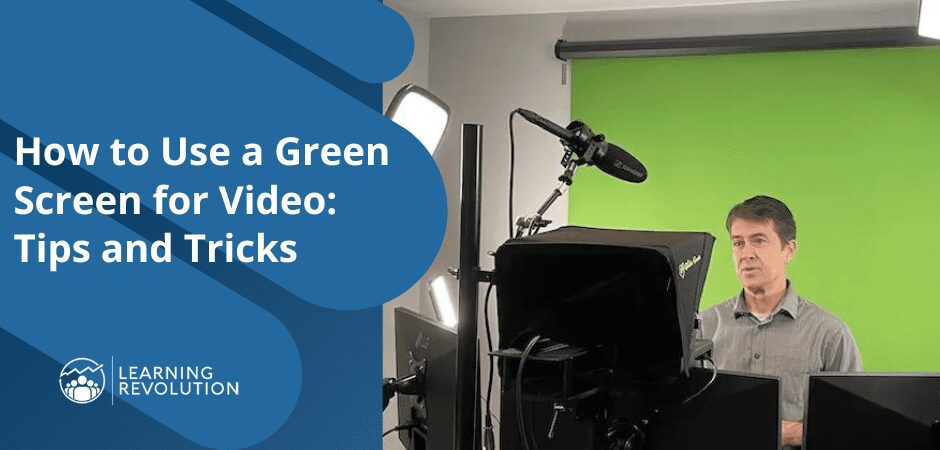
Whether your goal is to publish a diverse portfolio of educational products over the long haul or simply to launch your first online course, you need an audience – and effective content marketing is one of the most time-tested ways to build one.
But what is content marketing, and how can it help your education business succeed?
This post series covers everything you need to know, the best methods to use, and how to judge your content marketing strategy’s effectiveness. This is detailed, thorough post, so you can use the following table of contents to jump to the areas that seem most relevant to you.
What is content marketing?
Content marketing is the creation and publishing of online content to raise awareness of your brand, attract people to you, foster interest and engagement, and – ultimately – generate revenue. In the broadest terms, content marketing is what you do whenever you create and distribute content online—from blogging, to publishing YouTube videos, or to sending e-mail newsletters.
For the purposes of this how-to series, we’ll focus on the four main types of content marketing:
- Blog posts
- Video
- Podcasting
These aren’t the only kinds of only content marketing you can do: social media posts, ebooks, whitepapers and more all count as well. But these four are the most common forms of content marketing used by education businesses, and they generally produce more consistent results than other content formats.
What is the purpose of content marketing?
It’s important to be clear up front that all content is not content marketing. Our view at Learning Revolution is that the ultimate purpose of content marketing is to generate revenue.
At the same time, this does not mean that content marketing is a form of direct selling. In fact, you should almost never sell directly in your content marketing. You should focus on providing tremendous value, being incredibly useful, and demonstrating your knowledge and expertise.
But you should do all of that with a clear understanding of how the content you offer ultimately leads some portion of your audience to making a purchase. If you don’t do that – and if no purchases ever happen – it’s not marketing. It may make you feel smart, it may attract a lot of “likes” or shares to stroke your ego, but – I’ll repeat – it’s not marketing.
All of that said, there are many different variations of content marketing and many ways content marketing can help you achieve goals that pave the way to revenue generation. Some key goals you might pursue through content marketing include:
- Increase brand awareness
- Gain the attention of influencers
- Drive traffic to your Web site
- Convert visitors to subscribers
- Increase your authority as an edupreneur
- Reduce dependency on paid advertising
- Sustain relationships with current customers
- Test market receptiveness to new topics
Compared with other promotional efforts, particularly paid advertising, content marketing provides a much higher return on investment (ROI). According to HubSpot, marketers who focus on blogging are 13 times more likely to have a positive ROI, and 70 percent of marketers are actively focusing on content marketing strategies for 2020.
Unlike a Google ad or promoted post on Facebook, your marketing content can remain visible and relevant long after it’s been published. Even if a post becomes obsolete, simply updating it can give you a big SEO boost that will raise your search engine rankings. That means spending an hour or two on a single, well-crafted blog post could drive thousands of visitors to your site over the next several years, without costing you more than your time.
No advertising service can deliver that.
Content marketing best practices for blogging

Blogging is among the most common forms of marketing content in use today, with 86 percent of companies engaged in producing blog content.
Starting a blog – or dusting off an old one that has been neglected – is one of the best content marketing decisions you can make, but blogging can sometimes feel like shouting into the abyss. With so many voices clamoring to be heard (WordPress reports there are 70 million new blog posts published every month), how do you make yours stand out from the crowd?
Know your audience
This might seem obvious, but it really can’t be said often enough or emphatically enough: until you know who you’re writing for, you won’t be able to develop a strategy to attract an audience.
If you’ve already created and hosted online courses, seminars, or other educational events, you probably know something about the demographics of your learners and you want to build on that knowledge.
If, on the other hand, you’re just starting out, or are looking to pivot toward new learners, then it’s time to brainstorm the people you want to attract. Even if your educational field has broad interest, picking one specific niche to write about to is better than aiming for broad appeal, which often isn’t focused enough to attract anybody. (Note that even with this series – which address the very large, generic topic of content marketing – we are focused on how course creators and other edupreneurs can leverage content marketing).
If you want to attract several different demographics, rewrite posts and pages to appeal to different audiences. This is a common marketing strategy, with marketers writing to an average of three audience segments per brand.
See also: 15 Ways to Validate Your Course Idea
Research keywords
Keywords tell search engines what your content is about. They are also the terms that people enter into search engines when they’re looking for a website, reflecting their search intent. Keywords for this post, for example, might be “content marketing” and “what is content marketing?” Notice that a keyword can be an entire phrase. Some sites refer to them as “search queries” for this reason.
The point of researching keywords is to understand how your target audience uses search engines to find out about your subject. This is important for organic visibility—all the visitors or views your content attracts through search engines without using paid advertising.
Start by searching for your topic on Google. What words and phrases do you use? What questions do you ask? Google provides a lot of information on their Search Engine Results Page (SERP) that can help you identify more keywords and phrases based on your initial search. Look at the “People also ask” section at the top, and the “Searches related to keywords” section at the bottom of the page. By studying related searches regarding your subject, you should come up with a list of strong keywords, and even some ideas for the content you can create.
Google also provides a handy Keywords Planner that can take your research to the next level. Designed for Google Ads users, the planner will show you related keywords, the average number of months searches, and the competition for each phrase you enter.
Try to create a large list of low and medium competition keywords, and a few high competition keywords, for use in your blog until you start generating visitors. In popular niches, you might need to use more “long tail” keywords in order to find low competition options. Long tail keywords are several-word phrases that are very specific. For example “travel” is a general, high competition keyword, whereas “family skiing vacation Italian Alps” is far more specific.
Using long tail keywords, you can get individual pieces of your content ranked more highly on search engines, slowly building your overall authority until you can start ranking for the high competition keywords.
But don’t think long tail keywords aren’t valuable for other reasons. They are usually used by people who are almost ready to buy, meaning if you can rank for the keywords and phrases of interested buyers, you can generate a higher ROI with your content marketing than if you target more general searches.
You are what you EAT
When it comes to search engine optimization, Expertise, Authoritativeness and Trustworthiness are the cornerstones for ranking on Google. Luckily, they also happen to be cornerstones for successful course sellers.
EAT came about because Google decided to tackle the quantity of YMYL (Your Money or Your Life) websites that abounded in search results. YMYL sites often contained unqualified, disingenuous, or fraudulent information that “could directly impact the reader’s happiness, health, safety, or financial stability.” (Sites that promote online course scams usually fall in this camp.)
Websites covering international news, law, finance, shopping, and health are considered by Google to be disproportionately YMYL content, and as such they have very high page quality rating standards for those sites. EAT defines the factors that Google considers when it is weighing page quality.
So how do you tell a search engine that you’re an expert with authority who can be trusted? One of the methods marketers are using is long form content, particularly longer blog posts. HubSpot studied the traffic of a number of blogs and discovered that articles over 3000 words got three times the traffic, four times the shares, and 3.5 times more backlinks than shorter posts.
Just writing lots isn’t enough, but longer posts tend to be more detailed and expansive, demonstrating the author’s knowledge of the subject and adding to the site’s trustworthiness rating.
This style of content production might seem at odds with readers, who just want to get their questions answered and move on. About three quarters of people skim posts rather than reading them completely, according to research by HubSpot. That’s why when writing long form content, it’s a good idea to break up the information with headers, bullet points, tables, infographics, and more. This method of writing allows you to provide enough detailed content to keep search engines happy, while making your posts skimmable enough for people to still consume easily.
Delete zombie pages
Unless you’re starting your website from scratch, you probably have old posts and pages that you haven’t looked at in months or even years. Some pages will be “dead,” meaning they get no visitors and are usually buried in SERPs or even de-indexed altogether. Then there are “zombie” pages. They don’t add anything to the site and don’t generate many visitors, but search engines still recognize them as relevant, meaning they’re affecting your site’s overall reputation and ranking.
In worst case scenarios, zombie pages are costing you money. If a learner is looking for an online course and is directed to a zombie page about a course you no longer offer, they’ll more than likely bounce from your site after the first dead link. Zombie pages are unprofessional, and out of date information on one page makes the whole site seem unreliable.
Common causes of zombie pages include abandoned landing pages, and efforts to rank for particular keywords. Maybe you gave dedicated landing pages a try, but stopped promoting or updating them. Or maybe you created a filler page, intending to one day go back and redo the content but never got around to it. However they got started, zombie pages need to go if you want to maximize your site’s SEO potential.
You can identify zombie pages on your site by looking at your visitor metrics (e.g., in Google Analytics). How many views does a post average in a day, week, or year? Does a disproportionate percent of your site traffic go to just a handful of pages? Are some of the pages on your site simply irrelevant to the current direction of your business? Ensuring that all your content is related to your overall field of focus is important to improving your SEO, and thus your content marketing results.
Read more about blogging for content marketing >>
Content marketing best practices for e-mail

Building a dedicated mailing list is by far the best way to keep in touch with learners and have a ready stream of warm leads whenever you have a new course, seminar, or book available. Done right, e-mail content marketing provides an incentive for learners to subscribe, keeps them engaged, and generates revenue. Here’s how you do it.
Make subscribing easy
The first step to e-mail marketing is to build a mailing list. Make sure your mailing list sign-up process is fast, easy, and accessible. Ideally have signup boxes on every page of your website, host a dedicated signup page, or use a custom short URL from a service like Rebrandly to make sharing your mailing list signup page a breeze. Also, while some people find them annoying, pop-ups that encourage people to sign-up for your list flat out work. (Optin Monster is our current go-to service for creating effective pop-ups and tracking the results.)
Don’t ask for a lot of information from your subscribers upfront. The more clicks it takes, the more potential subscribers you lose. Restrict your signup form to an e-mail address and first name. You can always poll subscribers and collect more information later, but confronted with an elaborate signup form, many people will walk away.
Follow the law
Europeans are covered under the General Data Protection Regulation (GDPR), so if you are likely to get European subscribers to your mailing list, it needs to be GDPR compliant. All major e-mail marketing companies have built GDPR compliance into their signup forms and data storage protocols, meaning you don’t have to worry too much about how to follow the law, but GDPR does require a double opt-in to your mailing list, which can stop some subscribers from joining.
Other laws to be aware of include Canada’s CAN-SPAM Act, which prohibits cold e-mailing people who haven’t already opted into your mailing list, and requires you to make it easy for people to unsubscribe. And California has the California Consumer Privacy Act (CCPA) which covers ground similar to both GDPR and CAN-SPAM.
Generally, mailing list and anti-spam laws are straightforward, and by following these best practices you’ll ensure your list is compliant and has high quality subscribers.
- Enable double opt-in (i.e., subscribers must click the “Confirm” link in an e-mail automatically sent by your e-mail system when they first opt in)
- Don’t add people to your mailing list unless you know they want to hear from you
- Limit the number of e-mails you send—don’t spam
- Include a physical address in the footer of every e-mail
- Make your unsubscribe link easy to find
Mailing lists are usually billed by the number of subscribers, so ensuring every contact on your list is genuinely interested in hearing from you means you’ll get the best return from your e-mail content marketing.
Add value with every e-mail
Nobody likes spam, and people will soon stop opening e-mails if they get too many or the e-mails don’t offer anything of interest. Mailing list management company SmartrMail analyzed the success of their clients’ campaigns based on the number of e-mails they sent, and determined that 4-8 e-mails per month (1-2 e-mails per week) was the sweet spot for content marketing. At this level, e-mails had the highest open and click rates, meaning more people read and engaged with that content.
Although mailing list subscribers remain engaged with companies that contact them up to twice a week, many businesses e-mailed far less: between 0-2 times per month. E-mailing infrequently does have advantages: SmartrMail’s analysis showed that sales were 50 percent higher for mailing lists that contacted subscribers less than once per week. In all likelihood, these lists tend only to inform subscribers of new updates and sales events, rather than providing more general content on a regular basis.
Every contact with a mailing list subscriber is a chance to further engage them with your brand, but it comes at the risk that they’ll unsubscribe and leave forever. That’s why most businesses are judicious about e-mail frequency and err on the side of caution. Ultimately, subscribers join your mailing list because they want something from you, be that discount coupons, notifications of new product availability, or ongoing information that the subscriber finds valuable. It’s providing the latter that relies most heavily on good content marketing, and results in the most engagement and interaction from subscribers when it’s done right.
All of that said, don’t be afraid of unsubscribes. While you don’t want to see a flood of them, they are part of the natural “pruning” of your list that ensures you are mailing to people who are actually interested in what you have to offer.
Schedule at smart times
If you plan to maintain an e-mail content marketing campaign and engage your subscribers with regular newsletters, then working to a schedule is important for setting expectations. While data shows that marketing e-mails get the highest open and click rates on Tuesdays and Thursdays, especially if sent at the beginning, middle, or end of the workday, that might not be true for your mailing list. It’s a good idea to experiment with different days and times for your e-mails to determine what works best, and then keep your schedule consistent so subscribers know when to expect your next e-mail.
Ask yourself the following questions:
- What does a typical day look like for my subscribers?
- How long will it take to read my e-mails?
- When will the majority of my subscribers have free time to engage?
- How do my subscribers access my e-mails (desktop, mobile, etc.)?
Reading your e-mail, however awesome it might be, won’t be a priority for your subscribers. The key to successful e-mail content marketing is to deliver the e-mail at the opportune moment for subscribers to take a few minutes to open, read, and engage with the content. That might be while drinking a cup of coffee immediately after entering the office in the morning, or on their phone waiting to pick the kids up from school in the mid-afternoon. Pay attention to the days and times your subscribers open and engage with your e-mails to better understand when you should be reaching out to them to get the best results.
A/B testing
In order to increase your e-mail open rates, you need to grab your subscribers’ attention right from the off. That means having a great subject line and text snippet. These are the only pieces of information your subscribers get before choosing to open your e-mail, so the more successfully you can pique their interest at this stage, the higher your open rate will be.
A/B testing is a good way of trying different variables to see what works best on your mailing list. You might choose to test your subject lines, call to action buttons, or even your color scheme. The goal should be to make your e-mails clearer, more accessible, and more engaging.
Many e-mail management systems – e.g., MailChimp, Convert Kit – have built in A/B testing functionality. All you’ll have to do is create two variations of your e-mail, and choose segments of your mailing list to send them to. After testing the e-mails on smaller segments, the most successful variation of your test will be sent out to the list as a whole. This gives you the best opportunity to have the highest open and engagement rates for every e-mail you send.
Content marketing best practices for video

Whether it’s YouTube, Facebook Live, IGTV, or TikTok, video is one of the most successful and engaging content marketing formats available. As an edupreneur, there are countless ways you can use video content marketing to promote your brand, from creating shareable snippets of your classes and seminars, to answering questions or demonstrating your talent and passion for your subject.
Edupreneurs who teach practical skills such as cooking, knitting, playing an instrument or creating art can harness video to demonstrate their expertise and improve their authority in their field, while theoretical edupreneurs can produce short segments on common questions that will engage viewers and encourage them to find out more.
Tell a story
Storytelling has long been recognized as an important tool in aiding memory and improving comprehension in educational settings. We remember that Isaac Newton came up with the concept of gravity when an apple fell on his head, and that Archimedes shouted “Eureka!” and ran naked through the streets of Syracuse after understanding water displacement and buoyancy while in the bath.
Stories capture our imaginations and engage our emotions, triggering a dopamine-reward response that is then associated with remembering that piece of information. By utilizing storytelling in your videos, you can make your content more memorable and engaging.
Use subtitles
While video consumption is growing rapidly (by the end of the year, we’ll each be watching an average of 100 minutes of online videos every day), people engage with it in a variety of different ways. Many videos shared on social media are watched without volume, for example, so videos without subtitles are less accessible and will have a lower watch rate.
It isn’t just people who have their devices muted who need closed captions. Some 36 million Americans, and 5 percent of the global population, are deaf or hard or hearing. Providing subtitles helps make your videos equally accessible to those watchers, and captioning your videos also enables them to be translated into other languages, further expanding your online reach.
Be cautious when using automatically generated captions from sites such as YouTube. These captions use speech-to-text functionality to provide subtitles and while they might give listeners an idea of your video’s content, they’re rarely perfect transcripts. If you speak quickly, have an accent, or use background sounds and music, there will almost certainly be mistakes that should be corrected before using the captions.
Keep it simple
Almost two thirds of online users watch videos using smartphones. The portability and convenience of watching video on your phone means the medium has dominated social media through platforms such as Tik Tok, Snapchat, and Instagram. However, smartphone viewing also has restrictions: viewers are more likely to be watching on the go, and find short, direct videos more engaging. Facebook allows users to post videos up to 4 hours long, but says the best results come for those that last 3-5 minutes, and found that 47 percent of a video’s value was delivered in the first three seconds.
Simply put, attention spans are short, and your videos need to be shorter. That means keeping them simple. Comparatively few people will have the time or patience to watch an hour-long video on how the solar system was made, or how to cook a lasagna in real time. Instead, aim to provide one fact, or answer one question, per video. Keep it brief and to the point. If viewers want to learn more, they can always sign up for one of your courses!
Optimize for SEO
Just like websites, videos can be search engine optimized. One of the easiest places to start is by captioning your video. This provides text that search engine crawler bots can read to understand what your video is about and how to display it in search engine results.
The description is also important to help search engines understand what your video is about. Use relevant keywords and frame your description in the same question and answer format that search engines use for best results. If you have the option to tag your video, do that as well. The more information you can provide about your video’s contents, the more accurately it can be indexed by search engines, and the more likely it is to be seen as a relevant result for related searches.
Warning: when it comes to SEO, bots have long aglearned to recognize when a site or video is engaged in keyword stuffing. This is the practice of loading the page or description with keywords in order to try to climb the rankings on SERPs. You can often identify this practice if you spot paragraphs with lists of keywords, or jumbles of text that make no sense. Always consider your human viewer first and include relevant keywords in ways that read naturally.
One temptation with video SEO is to tag the video with related, but not included, content. For instance, a video about the solar system might be tagged “Stephen Hawking last words,” because that’s a high-ranking related tag on YouTube. But if your video doesn’t contain the tagged content then viewers who are looking for that information will quickly navigate away to find one that does. That leads to short overall watch times, high attrition rate, and the video being suppressed by the site’s algorithm. Whenever you’re writing your video description or tags, make sure they’re descriptive of the video’s actual contents, not the subject in general.
Learn all about YouTube SEO >>
Content marketing best practices for podcasting

Podcasting has grown hugely in popularity over the last five years, meaning it’s the best up-and-coming medium to get your foot in the door early enough to make a difference. While many content creators convert their video to audio in order to produce podcasts, creating a dedicated podcast from scratch will provide the best content marketing results.
Make it personal
Unlike the passive consumption of video, listening to a podcast feels more like engaging in a conversation. Podcast listeners hear presenters talking like they’re speaking directly to them, making the act of tuning in a personal, intimate experience. Good hosts can cultivate this impression to create one-on-one relationships with their listeners.
The simplest way to do this is to use a lot of discourse markers such as “you know” that include the listener and re-engage them in the podcast. We are primed to listen for these cues and refocus our attention when we hear them, and they shift the tone of the podcast from a lecture to a conversation.
Make it familiar
Jingles might be cheesy, but they immediately familiarize the audience with the show and put them in the right mindset to listen. Using the same music and the same welcoming and closing messages in your podcast creates a sense of familiarity and comfort that encourages the listener to pay attention. (We’ve been using the same intro music on the Leading Learning Podcast for years and now even use it as “walk on” music when we speak, as people identify us with it.)
When tuning into a podcast, listeners need to be in a particular frame of mind in order to engage fully with the material. For edupreneurs, you need to have an audience that is primed to focus and learn. By signaling the start of your podcast with the same sound each time, you can help dedicated listeners fall readily into a learning mindset.
Add value to your subject
Although podcasting is a medium that’s just beginning to go mainstream, there are already thousands of podcasts for listeners to choose from, and limited time for them to tune in. Most podcasts are ongoing monthly, weekly, or even daily shows, meaning if a listener gets hooked on a podcast, it will consume a portion of their available time, closing the door to them discovering more.
With lots of competition for limited space, your podcast has to stand out from others in your field. Research the competition and think about what they’re not offering that learners want. Consider polling your previous course attendees and mailing list subscribers to find out what would make them tune in. From teaching the basics to hosting guest interviews, you can approach your field in any way you choose, as long as you’re providing content that listeners really want.
Production values matter
If you want an audience to tune in, you need to make listening to your podcast a seamless experience. Invest in a good quality mic and audio recording software, and really take time to make sure your home recording setup provides the best audio quality possible.
That means eliminating background noise, softening hard consonants and sibilant S sounds, and paying attention to your speech cadence. Are you leaving long pauses between sections, or speaking so quickly it’s hard to follow every word? Delivering a podcast is a skill that may take practice to learn.
Tips to limit ambient noise and improve sound quality in your podcast recording
- Use a mic stand and measure recording distance to get the same sound each time
- Keep the mic away from computer fans
- Turn off office machines, fans and air conditioning
- Use a pop filter to soften harsh vocal sounds
- Use soundproof foam to make a noise dampening box for your mic
- Hang curtains over large, flat walls
- Try to record in a small room, or use cubicle dividers to create a contained space
Producing a professional podcast from home might take some trial and error, but improving your audio quality makes your podcast easier to listen to, ensuring more subscribers keep coming back.
Read more about podcast content marketing >>
The role of social sharing in content marketing
According to HubSpot, 94 percent of marketers used social media to promote their content in 2019. The benefits of social media are immeasurable. Facebook has 2.6 billion users (Q1 2020), Pinterest 367 million (Q1 2020), Snapchat 229 million (Q1 2020), Twitter 166 million (Q1 2020), and Instagram 107 million (2019).
Almost nowhere else on the internet will you be able to access such large numbers of people, sorted by interests and ready to engage with shareable content. Here’s how you attract their attention.
Cross-promotion reaches more learners, faster
Although each social network has tens of millions of users, not every network is used equally by all people. Twitter attracts users aged 25-34 and 55-64, whereas 53 percent of Americans 15-25 years old use Snapchat. Pinterest leans heavily female (43 percent of U.S. women use the platform, compared with 16 percent of men), while LinkedIn members are more likely to be male (57 percent).
As an edupreneur, you probably have an idea of the demographics you are targeting with your content marketing. Being on the network(s) that appeal to the majority of your target audience is the first step in successfully marketing toward them, but there’s a strong likelihood that your audience is spread across several social networks, especially if you have more than one target demographic. In order for your content marketing to get the maximum amount of exposure, you should be sharing it across multiple networks, and the best way to do this and save time is to cross-promote your posts.
Many social networks and content management systems make cross-posting easy. When you publish blog posts from WordPress, you can use the native Jetpack plugin to Publicize your posts, automatically sharing them from your accounts on a variety of social media platforms, including Facebook, Twitter, and LinkedIn.
Facebook disabled the ability to cross-post automatically from Twitter, but you can still link your accounts so that Facebook posts are published as tweets. You can also automate other social network and sharing connections, including Instagram and Mailchimp, using third-party apps such as Zapier and IFTTT. This way you can publish a blog post, and have it automatically delivered to all your social networks and your mailing list, or tweet an update and have it shared instantly on other platforms.
Repurpose material into new formats
Not every social network is designed to work with all types of content. A 3000-word blog post can’t be easily condensed into a tweet, or automatically shared as an image on Instagram. You should keep different formats in mind when you’re creating content in order to maximize its sharing potential. Illustrative graphics on a blog can make great Instagram or Pinterest posts, while key quotes become shareable tweets. Try to add variable elements to each piece of content you create in order to increase its sharing potential.
Encourage sharing by building in calls to action or sharing buttons on your content. You can make graphics using free, high quality images from Unsplash and social templates from Canva. Make transcripts from videos and podcasts and publish them as blog posts, and share your newsletter across your social networks and website to drive new subscribers.
Each piece of content needs to be instantly understood on the network where it has been posted in order to become shareable. Keep this purpose in mind as you create new material from your existing content. A picture on your blog post can be purely illustrative, but in order for people to want to pin it, it has to deliver its own message. Remember the more shares each post gets, the more eyes you have on your business and message.
The best types of shareable content
Infographics continue to dominate when it comes to shareability. Spotify’s year-in-review Wrapped feature proved hugely popular, with enough people sharing their past decade of music to make it a trending Twitter Moment. Useful data, shared in an easily consumable format, is enduringly popular and a great way of condensing your content and delivering it to the masses.
Spotify’s example also points to another major trend in content sharing—user generated content. Giving people the opportunity to put their own spin on your content makes them more likely to share it with their social media networks, providing you with valuable free promotion. Edupreneurs who teach practical skills, such as cooking or art, are perfectly positioned to encourage learners to share their successes after following their lessons, but that doesn’t mean other edupreneurs can’t encourage their learners to get sharing as well.
According to Statista, 85 percent of American internet users watched video online, and the demand for video continues to grow. Data compiled by HubSpot is also compelling: 84 percent of people say they’ve been convinced to make a purchase by watching a brand’s video, 93 percent of brands attracted new customers using video marketing, and 88 percent of video marketers say video gives a positive ROI.
Video is both popular and influential, and converting your content into short, shareable segments almost guarantees positive results. If you have video content already, such as recordings of seminars or classes for online courses, consider how you can repurpose them into 60 second videos. Q&A formats where you answer common questions with short explanations make for good shareable content, and you can also record promotional videos intended for social distribution.
How to promote your content online
Social media isn’t the only avenue available for you to broadcast your content marketing. If you don’t have active social profiles or a large online following, it could take time to build up those networks, lowering your ROI. Instead, consider using some of these techniques to promote your content while you’re working on increasing your social footprint.
Guest posts
Harnessing the power of someone else’s social presence is a great way to reap the benefits of social sharing if you don’t have an engaged online audience. Search for popular bloggers and online publications in your field and review the kind of content they publish. Can you write something that will appeal to their readers? What have they overlooked in their own content strategy?
Many sites will partner with guest bloggers. Look for instructions on how to submit, or reach out to the site’s owner directly to pitch your idea. Avoid guest blogging networks and pitching to unrelated sites: these were early backlink building strategies that search engines can now detect. Aim instead to pitch to relevant publications in your field that have high domain authority, and make sure you include a link to your website in the post or author bio. This enables you to reach a new audience, and earn a backlink to your site that will improve your SEO.
Make sure the content you provide for the guest post matches the content of the site in style, length, format, and tone. If you’re pitching to a site that publishes a lot of informal, 1000-word posts, a 3000-word submission that reads like an academic essay won’t cut it. Show the submissions editor that you’re paying attention and can provide content that the site’s readers want.
Guest posting can fulfil a variety of purposes, from raising your authority in your field to increasing traffic to your website. Decide early what your target is, because that will determine the right sites for you to approach. To improve your academic reputation, it might be more beneficial for you to submit to respected industry sites that have a limited appeal, whereas layman sites with a broader audience will be more effective for boosting your web traffic.
Organic promotion
The primary purpose of content marketing is to attract organic visitors. In order to do this, your content must serve a purpose, be it informative, entertaining, or useful. Begin by providing the content your target learners want—teach them something new, create a community around a shared interest, or provide opinions that shed new light onto your subject. The more appealing your content, the easier it is to attract viewers.
Utilize keywords and SEO in order to give your content a boost on search engines, and use calls to action to encourage readers to share. The more views and shares you get, the more new readers you will attract.
Share your latest posts and updates via your mailing list, and encourage subscribers to forward e-mails, visit your site, and share your content with their friends and social networks. Word-of-mouth advertising is far more effective than paid ads or promotions—90 percent of people say they trust recommendations from friends and family, so something as simple as getting your learners to tweet your latest blog post can provide a high number of organic views.
If you have a blog, end your posts with a question and encourage readers to respond. The social activity keeps your site active, creates a sense of community, and you can mine questions and comments for ideas for more content. Just remember to weed out any spam to avoid your site becoming cluttered with irrelevant responses.
Paid advertising
Although the goal of content marketing is to get away from a reliance on paid ads to promote your business, it’s still a valuable resource that you can use to improve your online footprint and attract more learners. Advertising through Google and social media platforms can be a long-term, ongoing strategy, or you can simply promote a post or two for a few days or weeks in order to generate extra attention.
The downside to paid advertising (beyond the cost!) is its transient nature. Once your promotion stops running, your content will fall from the top of SERPs and social feeds to a much lower position or fall off entirely. However, that initial boost can be invaluable for attracting learners, making sales, and generating new followers and fans. Consider paid advertising in relation to your overall budget, and use it to draw attention to sales periods and compelling content that is designed to hook new learners.
Content marketing will continue to grow in popularity as online users become more discerning about how they spend their time. Done right, the content you create can attract and engage learners, encourage social sharing, allow you to break free from paid advertising, and drive revenue for your education business.
See also:
- Top 10 Best Content Marketing Tips for 2022
- Video Content Marketing for Course Creators
- Use Blogging to Market Your Course Business
- How to Amplify Your Content Marketing
Title Image by Diggity Marketing from Pixabay
Table of Contents


